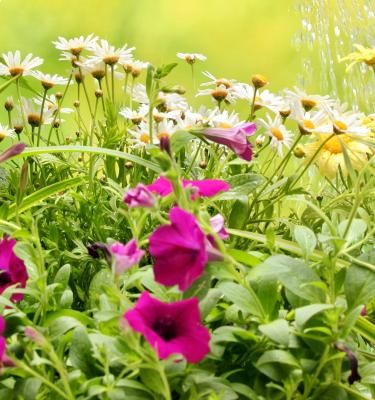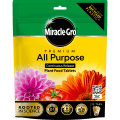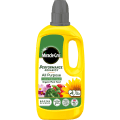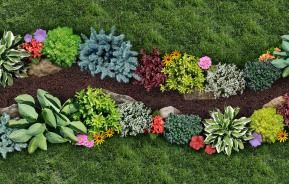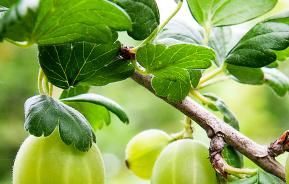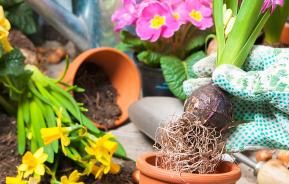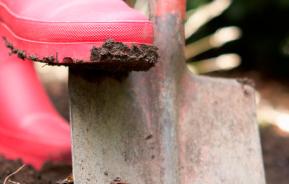In humans, the difference between sufficient food and not enough is all too apparent. The body uses up any energy reserves, losing weight and becoming painfully thin. Plants, just like humans, need a balanced diet of nutrients to grow to their maximum potential.
Plants need to be able to draw on reserves of all the vital elements to have healthy leaves and produce quality flowers and fruit. So if your petunias are pale and the leaves of your rhododendrons, tomatoes and roses are turning yellow between the veins then you need to get feeding.
General plant feeding
Plant starvation can be easily cured with general plant food that contains all three major nutrients - nitrogen, phosphate and potash. One application of a controlled release plant food will feed your plants for several months, releasing nutrients depending on soil temperature. These smart plant foods increase the release of nutrients to match the requirements of the plant - more when it's warm and less when the temperatures fall.
Alternatively, you can feed and water every fortnight with soluble plant food applied quickly and easily through the feeder which feeds your plants as easy as watering. This is especially beneficial if you are growing lots of flowering bedding plants that need regular watering to thrive.
Roses
For roses to produce a whole new set of stems, leaves and flowers every year, they use up plenty of plant foods and can soon exhaust reserves in the soil. Roses are heavy users of plant nutrients, so select a fertiliser that is rich in all nutrients. Rose & shrub plant food is specially designed to feed roses and flowering shrubs. Sprinkle it around the plant roots twice a year, once in March just before new growth starts and again in May ready for summer flowering.
Tomatoes
To produce a rewarding and tasty crop of tomatoes feed plants every 10 days with Levington Tomorite - Britain’s favourite liquid tomato food. It’s full of nutrients, supplemented with magnesium to help prevent leaves turning yellow between the veins.
Acid-loving plants
Most Rhododendrons, Azaleas, Camellias and other acid-loving plants can’t thrive in soil that contains too much lime. Unfortunately, they cannot absorb natural iron from soils that are alkaline. This trace element may be there, but these ericaceous plants can’t use it. To avoid the problem either grow them in containers of an ericaceous compost or supply iron in a special plant food tonic.
One application of sequestrene plant tonic will supply enough chelated iron to last in the soil from early spring until plant growth slows in autumn. If your plants need regular feeding at the same time then use ericaceous compost every couple of weeks throughout the spring and summer.
When to feed

Starting the growing season off with a good meal to avoid general malnutrition is good practice. Forward-looking gardeners dig well-rotted garden compost into the soil whenever appropriate and feed their plants with a balanced plant food from a box. Plant scientists make sure they include all the nutrients your different plants will need in the correct balance so you don’t have to even think about it. Just follow the instructions on each package.
Don’t feed plants growing outdoors when they are dormant. For most plants that means feeding during spring and summer and avoiding supplying extra nutrients during the winter when they are resting.
